产品编号:GM-52674AB
产品名称:Anti-PD1 hIgG4 Antibody(Pembrolizumab)
目录价:询价
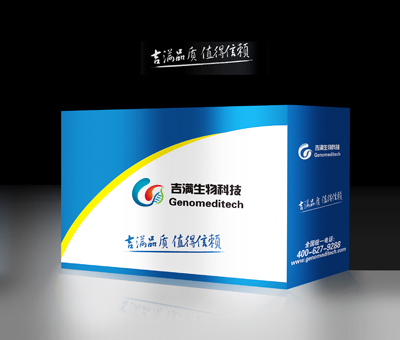
产品编号:GM-52674AB
产品名称:Anti-PD1 hIgG4 Antibody(Pembrolizumab)
目录价:询价

GM-52674AB-10 10 μg
GM-52674AB-100 100 μg
GM-52674AB-1000 1mg
Species Reactivity Human; Cynomolgus
Clone Pembrolizumab
Source/Isotype Monoclonal Human IgG4 /κ
Application Flow Cytometry
Specificity Detects PD1
Gene PD1
Other Names CD279, PD-1, PDCD1, SLEB2, hPD-1, hPD-l, hSLE1
Gene ID 5133(Human); 102123659 (Cynomolgus)
Background The programmed cell death 1 protein (PD-1, PDCD1, CD279) is a member of the CD28 family of immunoreceptors that regulate T cell activation and immune responses. The PD-1 protein contains an extracellular Ig V domain, a transmembrane domain, and a cytoplasmic tail that includes an immunoreceptor tyrosine-based inhibitory motif (ITIM) and an immunoreceptor tyrosine-based switch motif (ITSM). PD-1 is activated by the cell surface ligands PD-L1 and PD-L2. Upon activation, PD-1 ITIM and ITSM phosphorylation leads to the recruitment of the protein tyrosine phosphatases SHP-1 and SHP-2, which suppress TCR signaling. In addition to activated T-cells, PD-1 is expressed in activated B-cells and monocytes, although its function in these cell types has not been fully characterized. The PD-1 pathway plays an important role in immune tolerance; however, research studies show that cancer cells often adopt this pathway to escape immune surveillance. Consequently, blockade of PD-1 and its ligands is proving to be a sound strategy for neoplastic intervention.
Storage Store at 2-8℃ short term (1-2 weeks).Store at ≤ -20℃ long term. Avoid repeated freeze-thaw.
Formulation Phosphate-buffered solution, pH 7.2.
Endotoxin < 1 EU/mg, determined by LAL gel clotting assay
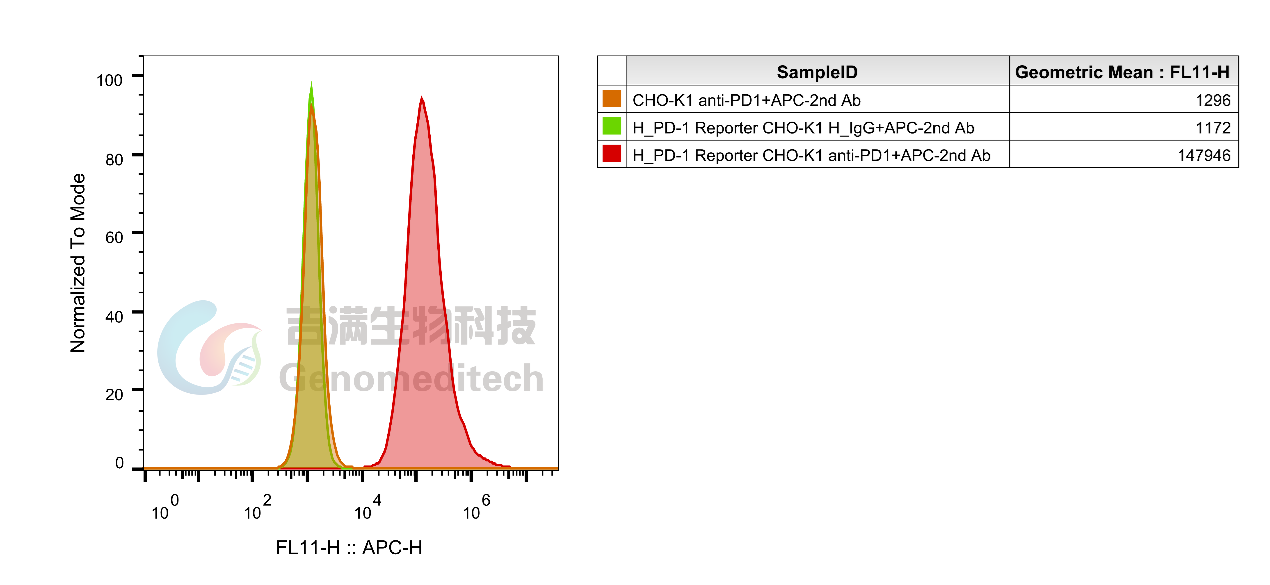
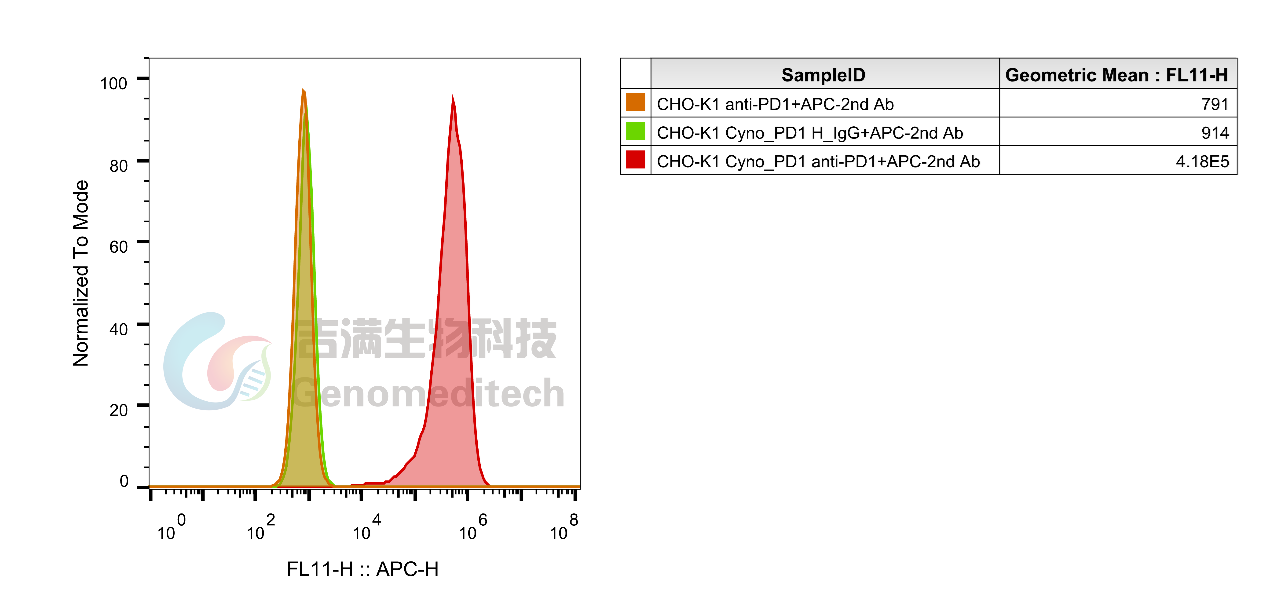
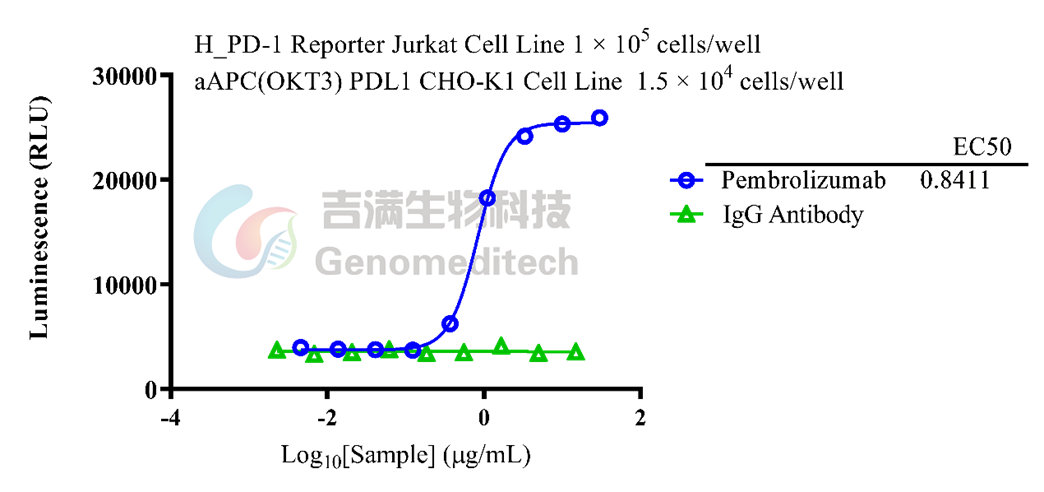
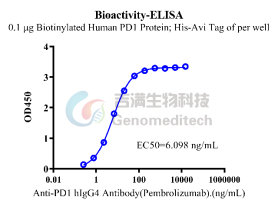
产品编号:GM-52674AB
产品名称:Anti-PD1 hIgG4 Antibody(Pembrolizumab)
目录价:询价

GM-52674AB-10 10 μg
GM-52674AB-100 100 μg
GM-52674AB-1000 1mg
Species Reactivity Human; Cynomolgus
Clone Pembrolizumab
Source/Isotype Monoclonal Human IgG4 /κ
Application Flow Cytometry
Specificity Detects PD1
Gene PD1
Other Names CD279, PD-1, PDCD1, SLEB2, hPD-1, hPD-l, hSLE1
Gene ID 5133(Human); 102123659 (Cynomolgus)
Background The programmed cell death 1 protein (PD-1, PDCD1, CD279) is a member of the CD28 family of immunoreceptors that regulate T cell activation and immune responses. The PD-1 protein contains an extracellular Ig V domain, a transmembrane domain, and a cytoplasmic tail that includes an immunoreceptor tyrosine-based inhibitory motif (ITIM) and an immunoreceptor tyrosine-based switch motif (ITSM). PD-1 is activated by the cell surface ligands PD-L1 and PD-L2. Upon activation, PD-1 ITIM and ITSM phosphorylation leads to the recruitment of the protein tyrosine phosphatases SHP-1 and SHP-2, which suppress TCR signaling. In addition to activated T-cells, PD-1 is expressed in activated B-cells and monocytes, although its function in these cell types has not been fully characterized. The PD-1 pathway plays an important role in immune tolerance; however, research studies show that cancer cells often adopt this pathway to escape immune surveillance. Consequently, blockade of PD-1 and its ligands is proving to be a sound strategy for neoplastic intervention.
Storage Store at 2-8℃ short term (1-2 weeks).Store at ≤ -20℃ long term. Avoid repeated freeze-thaw.
Formulation Phosphate-buffered solution, pH 7.2.
Endotoxin < 1 EU/mg, determined by LAL gel clotting assay



